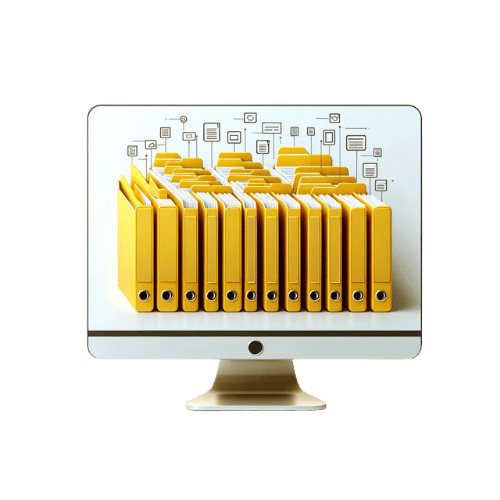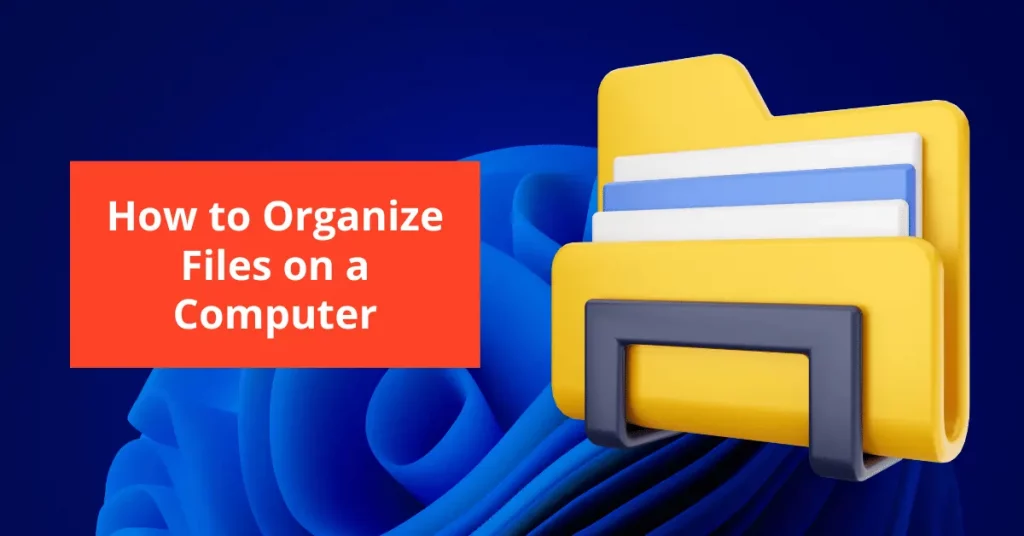Table of Contents
Organizing files and documents on a computer is essential for efficient and streamlined work. It not only saves time but also helps in finding files easily when needed. In this guide, we will discuss some tips and tricks on how to organize files on a computer.
Let’s first get started on why organizing files is important.
Importance of Organizing Files
Disorganized files can lead to a cluttered and chaotic desktop, making it difficult to find specific files when required. It can additionally hinder your computer’s speed and consume precious time hunting for lost files. By organizing files systematically, you can improve productivity, save disk space, and reduce stress levels.
With Organized File Structure, You Can
- Find files quickly when needed
- Create a backup and restore system easily
- Save time and improve productivity
- Keep your computer running smoothly
Without Organized File Structure, You May
- Waste time searching for files
- Lose important documents
- Experience a slow and cluttered computer
Now that we have established the importance of organizing files, let’s move on to some practical tips on how to do it effectively.
Best Ways to Organize Files on a Computer - 10 Steps
You should start with a plan and strategy before organizing computer files. Understanding what you need and how you use files will help you create an efficient file organization system.
Create a Folder Structure
Creating a folder structure is the simplest and most effective way to organize files on your computer. It involves creating main folders for broad categories of documents, such as work, personal, photos, etc., followed by subfolders within each main folder for more specific types of files.
Use Descriptive File Names
When saving a file, use a descriptive name that indicates what the document is about. It will make it easier to find specific files when needed and avoid creating multiple versions of the same document with different names.
For example: “Project Proposal Template” instead of “Document1”
Organize Files by Date
If you have a lot of time-sensitive files, organizing them by date can be helpful. Subfolders can be made within each primary folder by year, then files can be organized into folders by the month or day of creation.
Delete Unnecessary Files
Regularly going through your files and deleting unnecessary ones can help declutter your computer and free up space. Be sure to also empty your recycle bin after deleting files to completely remove them from your computer.
Use File Management Software
There are various file management software programs available that can help you organize and manage your files efficiently. These tools can assist in creating a folder structure, finding duplicate files, and backing up important documents. Some popular options include Dropbox, Google Drive, and Evernote.
Utilize Cloud Storage
Storing files in the cloud can provide a convenient method to access and organize them from any internet-enabled device. It also adds a layer of security for your crucial documents.
Keep Your Desktop Clean
Avoid cluttering your desktop with multiple files and folders. Use it only for temporary files that you are currently working on, and be sure to move them to their designated folders when done.
Label External Hard Drives
If you have external hard drives, label them clearly with the type of files they contain, such as “Work Documents” or “Personal Photos.” This will help you find specific files quickly and avoid confusion.
Create a Backup System
Regularly backing up crucial files is vital to safeguard them against data loss. External drives or cloud storage services can be utilized for backups.Keep Up with Maintenance
It’s important to regularly maintain and update your file organization system. This includes deleting unnecessary files, creating new folders as needed, and updating file names for better organization.
Additional Folder Structure Best Practices

- Avoid creating too many subfolders within a main folder, as it can become overwhelming and defeat the purpose of organizing files.
- Consider creating an “Archive” folder to store old or infrequently used files.
- Use color-coding for folders to easily identify different categories at a glance.
Organizing files on a computer is essential for efficient and stress-free work. By following these tips and implementing an effective folder structure, you can save time, increase productivity, and keep your computer running smoothly.
How to Organize Digital Files on a Business Server
Managing files on a business server requires a different approach compared to organizing personal computer files. Here are some additional tips for organizing digital files on a business server:
- Create a shared folder structure that all employees can access and use.
- Establish naming conventions for file names that all employees must adhere to.
- Regularly clean up old or outdated files from the server to free up space and avoid clutter.
- Use version control to keep track of multiple versions of a file, especially for collaborative projects.
- Train employees on the proper way to save and organize files on the server to maintain consistency and efficiency.
By implementing these practices, you can ensure that your business server is organized effectively, making it easier for employees to find and access necessary files.
Can't Accessing Data Because of Server Issues
Can't Accessing Data Because of Server Issues

By having a reliable server management service, you can have peace of mind knowing that your files are safe, organized, and easily accessible at all times.
Contact us today to learn additional details about our server management solutions and how we can enhance the efficiency of your file organization procedures. Don’t let server issues hold you back from efficiently managing your digital files.
Frequently Asked Questions
Everything you need to know about our IT services and solutions
How to organize business files on a computer?
- Create a clear folder structure organized by department, project, or function.
- Use a consistent naming system for files for easy search and identification.
- Utilize cloud storage to share and access files remotely for collaborative work.
- Clean up and archive old files regularly to optimize storage and reduce clutter.
- Set up access permissions to secure who can view or edit files, improving data security.
What is the best way to organize digital files?
- Use a clear and consistent folder structure.
- Name files in a logical and consistent manner for easy search and identification.
- Utilize file management software or cloud storage for efficient organization and backup.
- Regularly maintain the file organization system by deleting unnecessary files and updating as needed.
What is a good folder structure?
- A main folder for each department or category.
- Subfolders within the main folders for further organization by project, function, or date.
- Use descriptive and consistent names for folders to easily identify their content.
What is a good naming convention for files?
- Use clear and concise names that accurately describe the file’s content.
- Add relevant keywords in the file name for easy search and identification.
- Use consistent formatting, such as adding dates or project names before or after the file name.
How often should I clean up my files?
- It is recommended to regularly clean up files every few months or at least once a year.
- However, it may depend on your specific needs and the amount of files being created.
- Set a schedule or reminder to regularly review and delete unnecessary files.


